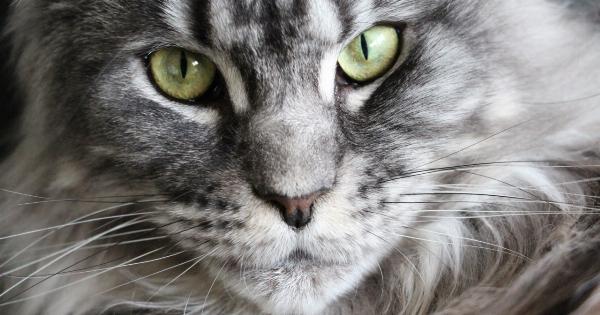Having a cat is a wonderful experience. They provide companionship, entertainment, and bring joy to our lives. However, one of the most common problems that cat owners face is when their furry friend refuses to use the litter box.
This can be a frustrating issue to deal with, but understanding the reasons behind this behavior can help you find a solution. In this article, we will explore six possible reasons why your cat is not using the litter box.
1. Health Issues
One of the first things to consider when your cat stops using the litter box is their health. Cats can develop urinary tract infections or other health issues that make it painful or uncomfortable for them to urinate.
If your cat is experiencing pain or discomfort, they may associate the litter box with this negative experience and avoid using it. It is important to take your cat to the vet for a thorough examination if you suspect they may be suffering from any health issues.
2. Litter Box Aversion
Cats are creatures of habit, and any changes in their environment can lead to litter box aversion. Some cats may have a negative association with their litter box due to a previous traumatic experience, such as being startled while using it.
Additionally, a dirty or smelly litter box can be a major turn-off for cats. Ensure that the litter box is scooped daily, and clean it out completely at least once a week to prevent any aversion issues.
3. Location Problems
The location of the litter box is crucial to its usage. Cats prefer privacy and quiet when using the litter box, so placing it in a noisy or high-traffic area can deter them from using it.
Additionally, if the litter box is difficult to access or located too far away from where your cat spends most of their time, they may choose to find alternate spots to relieve themselves. Ensure that the litter box is easily accessible, away from loud noises, and in a location where your cat feels safe and secure.
4. Wrong Type of Litter
The type of litter you use can have a significant impact on your cat’s willingness to use the litter box. Some cats have preferences for certain textures, scents, or materials.
If the litter is too rough on your cat’s paws or has a strong odor, they may avoid using it. Experiment with different types of litter to find the one that your cat prefers. Gradually transition to a new litter by mixing the old and new litter together, increasing the percentage of the new litter over time.
5. Stress or Anxiety
Cats are sensitive creatures, and stress or anxiety can lead to litter box issues. Major changes in their environment, such as moving to a new home or introducing a new pet, can cause stress and disrupt their litter box habits.
Additionally, conflicts with other cats in the household or lack of proper enrichment and stimulation can also contribute to stress-related litter box problems. Provide a calm and safe environment for your cat, and consider using pheromone diffusers or natural remedies to reduce anxiety.
6. Medical Procedures
If your cat has recently undergone a medical procedure, such as being spayed or neutered, they may experience temporary litter box issues. Pain or discomfort caused by the procedure can make it difficult for them to use the litter box.
If this is the case, consult with your vet for advice on how to alleviate your cat’s discomfort and encourage them to use their litter box again.
In conclusion, there can be several reasons why your cat is not using the litter box. It is essential to consider their health, litter box aversion, location problems, litter preferences, stress, and recent medical procedures.
By identifying the underlying cause, you can take appropriate steps to rectify the issue. Remember, patience, understanding, and consistent training are key to resolving litter box problems and ensuring your cat’s overall well-being.





























